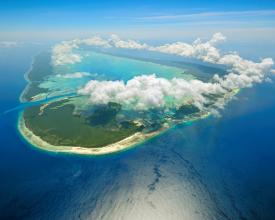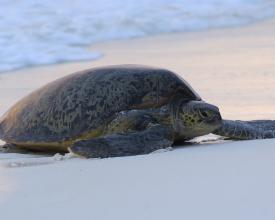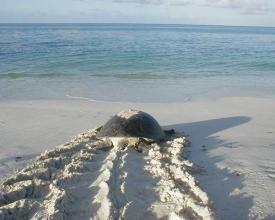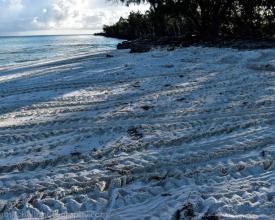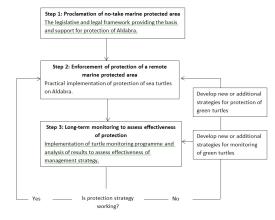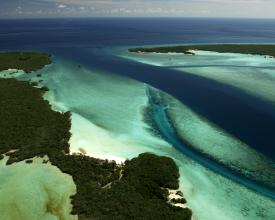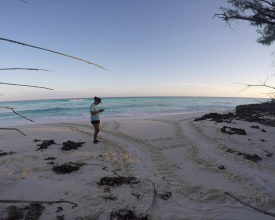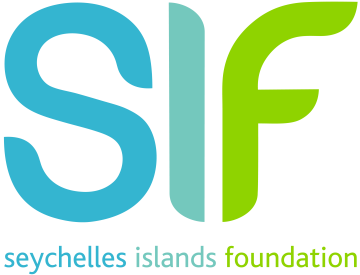
Protection of nesting beaches to prevent extinction of green turtles on Aldabra Atoll
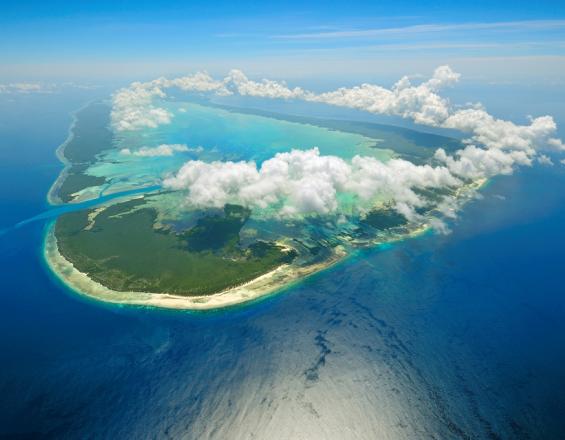
Historical exploitation of green turtles (Chelonia mydas) on Aldabra Atoll (Seychelles) led to a dramatic decline in the numbers of nesting turtles, with the lowest numbers observed in the late 1960s. In 1968 turtle protection regulations were implemented throughout Seychelles. Aldabra Atoll was designated a special reserve in 1981 managed by the Seychelles Islands Foundation and in 1982, Aldabra became a UNESCO World Heritage Site. Turtles at Aldabra have been well protected both in law and in practice with turtle nesting beaches strictly protected from poaching, development and pollution. The protection has been accompanied by consistent monitoring of turtle emergences. The successful conservation efforts have boosted the turtle population to 500-800% over a period of 40 years with an estimated 3100-5225 females nesting annually. Aldabra Atoll now holds one of the largest nesting rookeries for green turtles in the Western Indian Ocean.
Contexte
Challenges addressed
The green turtle has historically been exploited for meat and eggs onAldabra Atoll. In the late 1800s a small settlement was built for commercial exploitation. A record from 1926 states that 1,200 turtles were taken, consisting mostly of nesting females. Turtle harvest declined, dropping to a few hundred turtles annually in the late 1960s. Following implementation of protection and regulations Aldabra changed from being a place of harvest to an area of protection, conservation and recovery and green turtles were no longer seen as just a food source. Aldabra has been operated since early 1970s strictly as a research base occupied by not more than 20 inhabitants. Green turtle nesting habitat is also under threat from human development and destruction and the introduction of non-native predators worldwide. Establishing protected areas where turtle nesting habitat is undisturbed, where adult turtles are safe, and where hatchlings are not affected by human causes addressed these challenges.
Emplacement
Traiter
Summary of the process
The protection of green turtles on Aldabra was initiated through the proclamation of Aldabra Atoll as a special reserve (block 1). This legal protection was then enforced and implemented by the management authority through regular presence and patrols of the nesting beaches on the atoll (block 2). Alongside this, consistent monitoring of turtle emergences on the beaches has been conducted which provides insight into the effectiveness of the protection (block 3).
Building Blocks
Proclamation of no-take marine protected area
Recognising the value of Aldabra Atoll’s terrestrial and marine ecosystems, Aldabra was declared a special reserve in 1981 by the Seychelles government. Later on, due to its outstanding universal values, Aldabra was proclaimed a UNESCO World Heritage Site in 1982. This meant that there was no extraction of the resources, no destruction of habitat and legal protection of the marine protected area. This legislative and legal framework provides the basis and support for protection of Aldabra and its biodiversity. Since then, green turtle nesting habitat have therefore been protected from development and destruction and green turtles on Aldabra, on land and in the sea, have been protected against poaching. In 2018, the marine protected area around Aldabra has been extended and covers now the whole Aldabra group inclusive Cosmoledo, Astove and Assumption. This represents an increased by 74,400 square kilometres of waters in this area, further strengthening the legal protection of the nesting habitat in Seychelles’ Outer islands.
Enabling factors
Science-based evidence on the conservation value of a site is necessary for the nomination of a protected area. In early 1970s ecological assessments were carried out by scientist from the Royal Society of London. SIF was established in 1979 as management authority to manage Aldabra. Following this, the Seychelles government declared Aldabra a special reserve in 1981.
Lesson learned
Following collection of ample scientific evidence on its ecological value and with a fully operational management body, Aldabra was successful in its nomination to UNESCO as a world heritage site. The initial ecological assessments now form valuable baselines enabling the continuity of ecological monitoring of Aldabra Atoll.
Enforcement of protection of a remote marine protected area
Aldabra Atoll has been protected legally and as well as in practice for almost 40 years. Through the Aldabra research station, the Seychelles Islands Foundation has been actively present on the site. Furthermore, monthly patrols are conducted to the majority of Aldabra’s beaches, and other research activities take staff to various parts of the atoll weekly. As a result, there is a strong presence around the atoll. Being such a remote location, this active and continuous presence on Aldabra deters turtle poachers from the atoll and also enables poachers to be stopped if caught in the illegal act.
Enabling factors
Operations on Aldabra are funded through visitor entrance fees to Vallée de Mai, Seychelles second World Heritage Site also managed by SIF. Boats and fuel are needed to access most beaches for conducting patrols. Qualified personnel trained in skippering and experienced in navigating on Aldabra is essential to reach beaches far away from the research station.
Lesson learned
In order for operations to be successful and for safety purposes, the training and transfer of knowledge is an essential component when working on a remote marine area. A thorough understanding of environmental conditions such as tides and currents and geomorphological elements, such as shorelines and islet locations, is vital to conduct movements on Aldabra. Skills and knowledge are passed on to all new personnel working on Aldabra by more experienced personnel before visiting far away sites and conducting patrols. Moreover, staff needs to be aware of the legal framework of the protection of the atoll in order to know how to intercept poachers.
Long-term monitoring to assess effectiveness of protection
At the Aldabra research station, the Seychelles Islands Foundation implements long-term monitoring programmes of species and habitats. The results of these programmes are used to advise and assess effectiveness of conservation and management strategies. Set up by Jeanne Mortimer, a turtle track monitoring programme has been carried out consistently across the 52 nesting beaches on the outer edge of Aldabra since 1980. Each morning rangers record the number and type of turtle emergences during the night for an index nesting beach, while other beaches are visited less often due to location. No active management interventions for turtles are carried out on Aldabra. Analysis of data from 1968 to 2008 concluded a 500-800% increase in the green turtle population to an estimated 3100-5225 female nesting annually (Mortimer et al. 2011) and the population has continued to increase. This shows that establishing protected areas where turtle nesting habitat is undisturbed and adult turtles are safe is an extremely effective tool in the conservation of certain species and should be a primary management approach. This not only includes the nesting beach, but also includes the fringing reef where females may remain during their consecutive nesting attempts.
Enabling factors
To be able to implement long-term monitoring programmes, standardised monitoring methodologies are necessary. All new personnel on Aldabra undergo training in order to maintain the correct standard and procedures of data collection. In order to retain institutional memory, a handover period is conducted in which experienced staff and recent recruits feel confident in the knowledge of conducting monitoring on Aldabra.
Lesson learned
The documentation of monitoring methodologies in detailed guiding protocols is necessary to ensure that the same assessment procedures are implemented over the years. This is especially important on Aldabra where its remoteness and isolation results in high staff turnover. Protocols ensure that all information on what is collected is easily available for new staff. Having protocols and clear objectives also ensures that data can be maximized and retains its value. As a result, on Aldabra, all monitoring programmes are documented, including turtle track count monitoring, one of the longest data collection programmes implemented on the atoll.
Impacts
The strict protection of Aldabra Atoll meant that any turtle exploitation and all turtle poaching activities ceased, that the coast remained undeveloped and unpolluted providing for excellent nest habitat and that the introduction of invasive predators has been minimal. Ultimately, this has resulted in an increase in the population of nesting green turtles, a species classified as a globally endangered on the IUCN redlist. Consistent and standardized monitoring of turtle emergences over the last 37 years has allowed the Seychelles Islands Foundation (SIF) to document the success of this solution. Aldabra now represents a successful model for effective turtle conservation for protected areas in the region and the green turtle population is a national pride for the atoll. In 2014 Aldabra became part of the Indian Ocean South-East Asian Marine Turtle Site Network in recognition of Aldabra's importance to marine turtles. Furthermore, the destructive commercial exploitation in the 1900s has now been replaced by eco-friendly tourism activities. Regular sightings of sea turtles around the atoll are one of the highlights of a visit to Aldabra, boosting tourism and in turn increasing revenue for management of the protected area. SIF is investigating the possibilities of rat and cat eradication and strict biosecurity measures are in place to prevent arrival of other invasive species.
Beneficiaries
Seychellois, Humanity – Being a world heritage site, all Indian Ocean islanders, people from East African countries, scientists, tourists
Sustainable Development Goals
Story
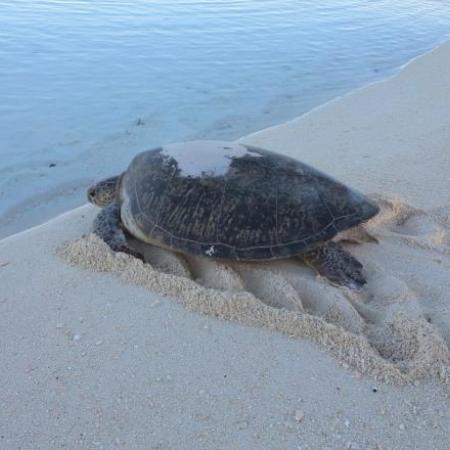
In 2017 I began working on Aldabra Atoll as part of the research team. Upon arrival on the atoll, I was awestruck by the sheer number of green turtles swimming around the coast and in the lagoon. Growing up Mahé, Seychelles’ main island, green sea turtles are a rare and elusive sight and I had never seen one before. They are still considered as a cultural food source and a delicacy for special occasions. On Aldabra, both adult and juvenile green turtles are ubiquitous and they can be seen swimming, resting and mating. Nesting green turtles are easily encountered at night, particularly during the peak nesting time from March to May. My first encounter with a nesting female green turtle was during the daily turtle track count which is conducted to monitor turtle emergences, in order to detect trends in the nesting population. On Aldabra I’ve learnt how to measure, tag and collect biological information on green turtles. The attitude is also different; green turtles here are an emblem of conservation success and motivation for continued protection. Aside from work, I get to observe the species underwater during regular snorkelling sessions on the coral reef. The experience is unique and truly unforgettable.
